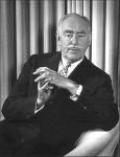As a young man, Theodore Roosevelt struggled through a brutal winter on a cattle ranch in the Dakota Territory. The adventure launched a love affair with the western U.S.
Editor's Note: H.W. Brands is a professor at the University of Texas at Austin and the author of twenty books on American history, including two that were finalists for the Pulitzer Prize.
Her owner planned to take her from California to slave-holding Texas, so Biddy Mason went to court. After a dangerous drama, she won her freedom.
Born a
William Cody established his reputation during a celebrated clash with Yellow Hair.
Editor’s Note: Steve Wiegard is the author of ten books, mostly on American history, and he was the longtime senior writer at the San Francisco Chronicle and San Diego Evening Tribune.
With five major exploring expeditions west of the Mississippi, John C. Frémont redefined the country — with the help of his wife’s promotional skills.
Editor's Note: Steve Inskeep, the host of NPR's Morning Edition, has recently published
Interest in the outlaw has grown recently with the discovery of the first authenticated photographs of Henry McCarty, who died at the age of 21 after a short, notorious life of gambling and gunfights.
A historian looks at the distinctive Midwestern identity of Wilder and her "Little House on the Prairie" books.
Editor's Note: We were devastated to learn that John Miller, a longtime professor of history at South Dakota State University, passed away after submitting the following essay to American Heritage.
They created towns and became the center of Western life, enabling wheat, cattle, and minerals to flow out of the West
Half a century after engines touched pilot to pilot at Promontory, Utah, to complete the first transcontinental railroad, the imprint of the Iron Road was nearly everywhere in the American West. Some enthusiastic real estate promoters and railway officials even claimed that the railroads invented the West—or at least the national image of the West.
Although it ran only briefly 150 years ago, the Pony Express still defines our understanding of the Old West
Shortly before last Christmas, a prominent New York auction house put up for bid a collection of 63 postmarked envelopes and stamps that the daring riders of the Pony Express had carried 150 years ago. Experts estimated that the rare collection, owned by Thurston Twigg-Smith, an 88-year-old philanthropist and former publisher of the Honolulu Advertiser, might net $2.5 million. It drew $4 million.
The creator of the immensely popular new Western discusses what makes it truly new.
There have never been many of them, and they haven’t always behaved well. But for more than a century now, they’ve been one of the most famous law-enforcement out fits in the world.
From law officer to murderer to Hollywood consultant: the strange career of a man who became myth
Late in his life Henry Fonda, at dinner with a producer named Melvin Shestack, recalled meeting an old man who said he had firsthand knowledge of a memorable Fonda character, Wyatt Earp, the legendary frontier lawman of John Ford’s classic My Darling Cl
The legend of the most famous of all outlaws belongs to the whole world now. But to find the grinning teen-ager who gave rise to it, you must visit the New Mexico landscape where he lived his short life.
New Mexico is Billy the Kid country. In Santa Fe’s First Presbyterian Church, young Henry McCarty stood by in March 1873 as his mother exchanged vows with William Henry Harrison Antrim. Eight years later, alias Billy Bonney, a.k.a.
THE MOVIES, THE WARS, AND THE TEAPOT DOME
A journey of a hundred miles on a Wyoming interstate turns up the true stories behind the powerful Western myths
My wife and I are on the inter-state, headed north toward Johnson County, Wyoming.
From Fort Ticonderoga to the Plaza Hotel, from Appomattox Courthouse to Bugsy Siegel’s weird rose garden in Las Vegas, the present-day scene is enriched by knowledge of the American past
The Lone Star state as it once was—proud, isolated, independent, the undiluted essence of America forever inventing itself out of the hardscrabble reality of the frontier
The Texans on these pages are a vanishing species, born of the vast and varied geography of the toughest frontier.
The Wyoming photographer Joseph Stimson proudly portrayed his region in the years when it was emerging from rude frontier beginnings
In a career lasting almost sixty years, Joseph Stimson promoted Wyoming and other Western states in strong and spirited photographs.
The Photographic Record of a Western Success Story
The river has its source on the western slopes of the continental divide in Yellowstone National Park, flows south through Grand Teton National Park, curves west in a long arc through southern Idaho, then turns north and west for its meeting with the Columbia River, 1,038 miles
To Owen Wister, the unlikely inventor of the cowboy legend, the trail rider was a survivor from the Middle Ages – “the last cavalier,” savior of the Anglo-Saxon race
Piskiou,Vaches Sauvages, Buffler, Prairie Beeves—
One morning in July, 1966, a lone buffalo bull grazed near the highway on the mountain between Virginia City and Ennis, Montana, unmindful of the click of camera shutters or the rustle of hesitant tourists getting in and out of automobiles.
By the 1890’s, when Denver telegrapher George Lawton began collecting the curious photographs on this and the following pages, the era of the Western badmen was coming to an end.
Images of the Maritime West
Here is a bit of the old West nobody knows—or almost nobody—the West generally overlooked by both the fastdraw myth-makers and the scholars from the Land of Ivy.
The Colonial Status—Past and Present—of the Great American West
The pelts of beaver, the dust of placer gold, the tongues and hides of buffalo, the proteinaceous feed of native grass, the smeltings of precious and commercial minerals, the viscous gush of oil: these have been the elementals of the American West shipped eas
It was the time we were working out of the Diamond Hook, Davy Stevens’ starve-out operation at Cloverdale in northern Nevada.
Organizers held an old-fashioned cattle drive to commemorate the cowboy's role in winning the West, but, as they say, nostalgia ain't what it used to be.
The cowboys are gone, and so are the critters, Owen Ulph tells us in “The Cowboy and the Critter” on the preceding pages. The West, Ulph says, will never see their like again.
Western miners, the hard-rock stiffs, were as tough and horny-handed a breed of men as any in the world.
The man and the face are anonymous-and familiar.
For hoboes, the West was the land of milk and honey, of adventure, scenery, and easy living. A “land stowaway” hopped the first transcontinental train, and for six more decades they rode the rails
When young Jack London described the Reno of 1892 as “filled with … a vast and hungry horde of hoboes,” he was reporting no isolated phenomenon; shaggy, rootless men—tramps or hoboes—could be seen in every part of the West from the 1870’s down to the Second W
In painting the romance of the American cowboy, Remington knew instinctively what would grip his audience and held it fast.
In the summer of 1885 a young artist from New York by way of Kansas City found himself resting by a campfire with a couple of prospectors out in Arizona Territory at a time when Geronimo was on the prowl, perhaps “even in our neighborhood.” It was about 9 o’c
Every town is a ghost town in a sense—haunted by the shades of people who were born there, and lived there, and now are sone.





